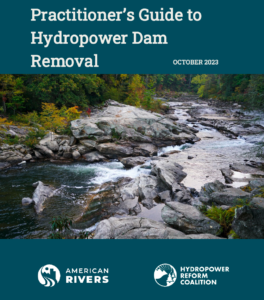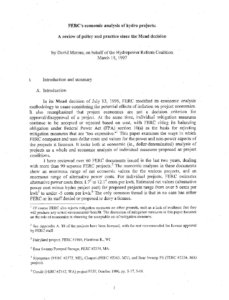Climate Change in the Mountains: AMC-led Journal Issue Explores the Impacts

For decades, AMC scientists have studied the patterns and effects of air pollution and climate change in Northeast alpine environments—which negatively affect not only natural ecosystems, but humans’ ability to enjoy them through recreation. That work continues, most recently with several current and former AMC scientists and researchers leading or contributing to a symposium and subsequent special issue of the online journal Northeastern Naturalist exploring the specific ways climate change is transforming the mountains—perhaps the most expansive treatment of the subject to date.
“AMC is a natural and critical partner to have in this discussion as it bridges land conservation, land management, and research within one organization, and has a long track record of leadership in all of these, particularly in this region,” says Bryan Wentzell, Maine Mountain Collaborative executive director and former AMC Maine policy director.
The set of papers published in Northeast Naturalist demonstrate the undeniable consequences of climate change on Northeast mountains. They also underscore the importance of both federal and state policies that curb emissions and actions like AMC’s pledge to achieve net zero greenhouse gas emissions by no later than 2050. Dr. Sarah Nelson, AMC director of research, co-edited the special issue of Northeastern Naturalist alongside Dr. Caitlin McDonough MacKenzie, a former AMC hut naturalist and longtime researcher in the White Mountains.
“We just don’t know as much about the mountains, but we think they’re important for climate change resilience,” says Nelson, who co-authored the introductory paper summarizing the scope of work presented in the journal. “Mountains provide habitat for a lot of specialized plants and animals. They can live in these mountain environments because they’re cold-dependent or their ability to survive in harsher conditions gives them a competitive edge. It’s possible that if we lose these habitats, we could start losing plants and animals that rely on these ecosystems.”
A complete list of the papers in the special issue can be found on the Northeastern Naturalist website, but here are summaries of the papers that feature an AMC connection.
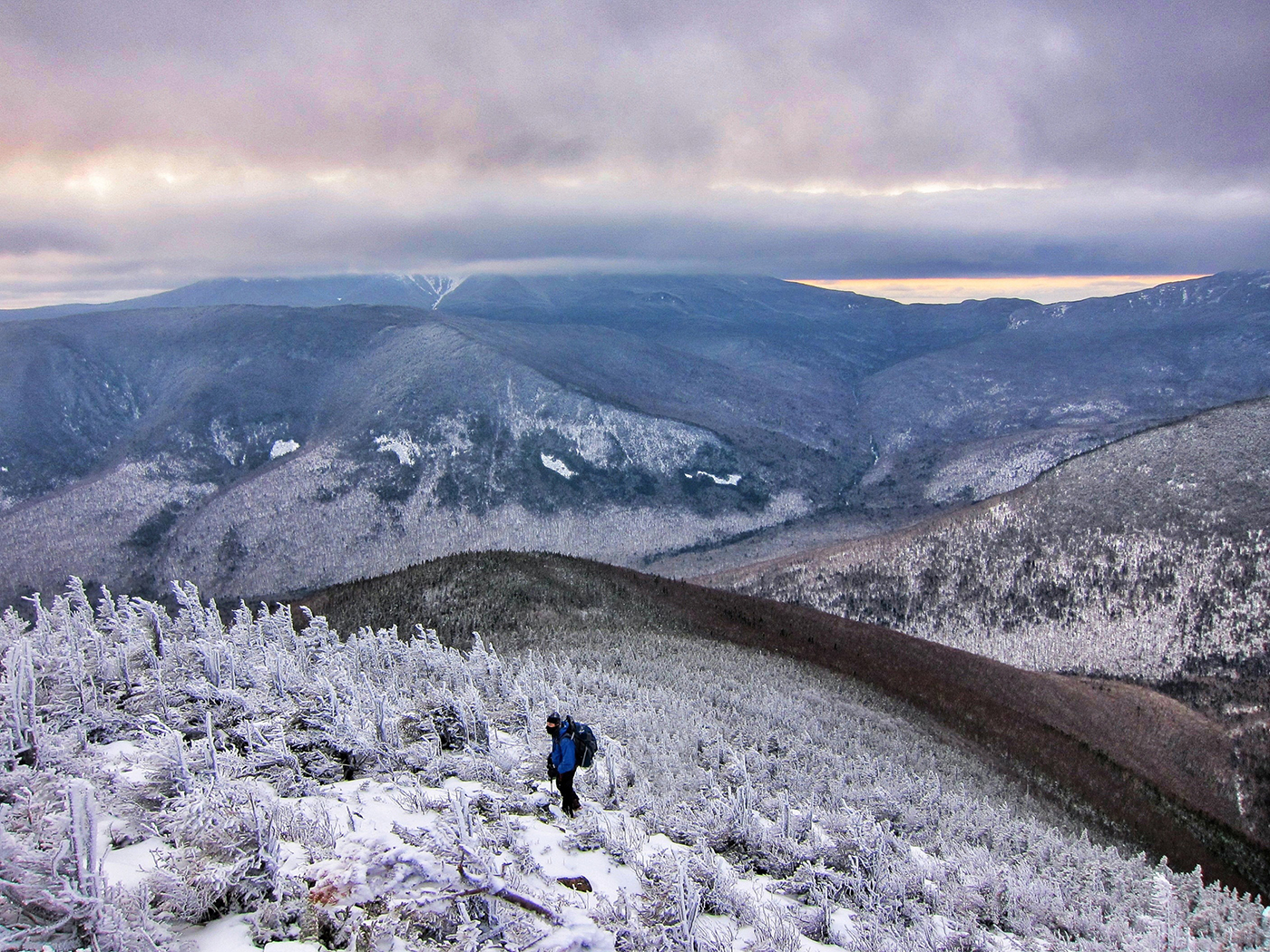
Changing Winters
Changes in indicators like coldness, snowfall, and snow cover have all pointed to continued loss of winter across the Northeast over the past hundred years. Nelson co-authored this new paper, led by Dr. Elizabeth Burakowski of the University of New Hampshire, which used a suite of common climate models to predict how winters will change until the year 2100. The researchers looked at scenarios where both lower and higher amounts of greenhouse gases are emitted, which depend on policy actions. For the high-emissions scenario—wherein the global temperature increases by 4.4 degrees Celsius on average, according to the 2021 assessment report from the United Nations’ Intergovernmental Panel on Climate Change—the Northeastern United States stands to lose more cold and snow by the end of the century. More specifically, the length of snow cover deep enough to support habitat for animals that require a moderately deep blanket of snow could decrease from its current two months to less than one month if global greenhouse gas emissions do not decrease substantially.
“Although the models indicate that we will continue to lose winter through the year 2100, one hopeful note is that the models very clearly show that reducing greenhouse gas emissions would slow the pace of winter loss considerably,” Nelson points out. “If we want to hang on to our New England winters for recreation, wildlife, winter-dependent economies, and our sense of place, it’s clear that moving toward emissions reductions is key to keeping the cold and snow.”
Burakowski, E.A., A.R. Contosta, D. Grogan, S.J. Nelson, S. Garlick, N. Casson, 2021. The future of winter in northeastern North America: climate indicators portray continued or accelerated warming and loss of snow that will impact ecosystems and society (tentative). Northeastern Naturalist 28(SI11): accepted, pending revisions.
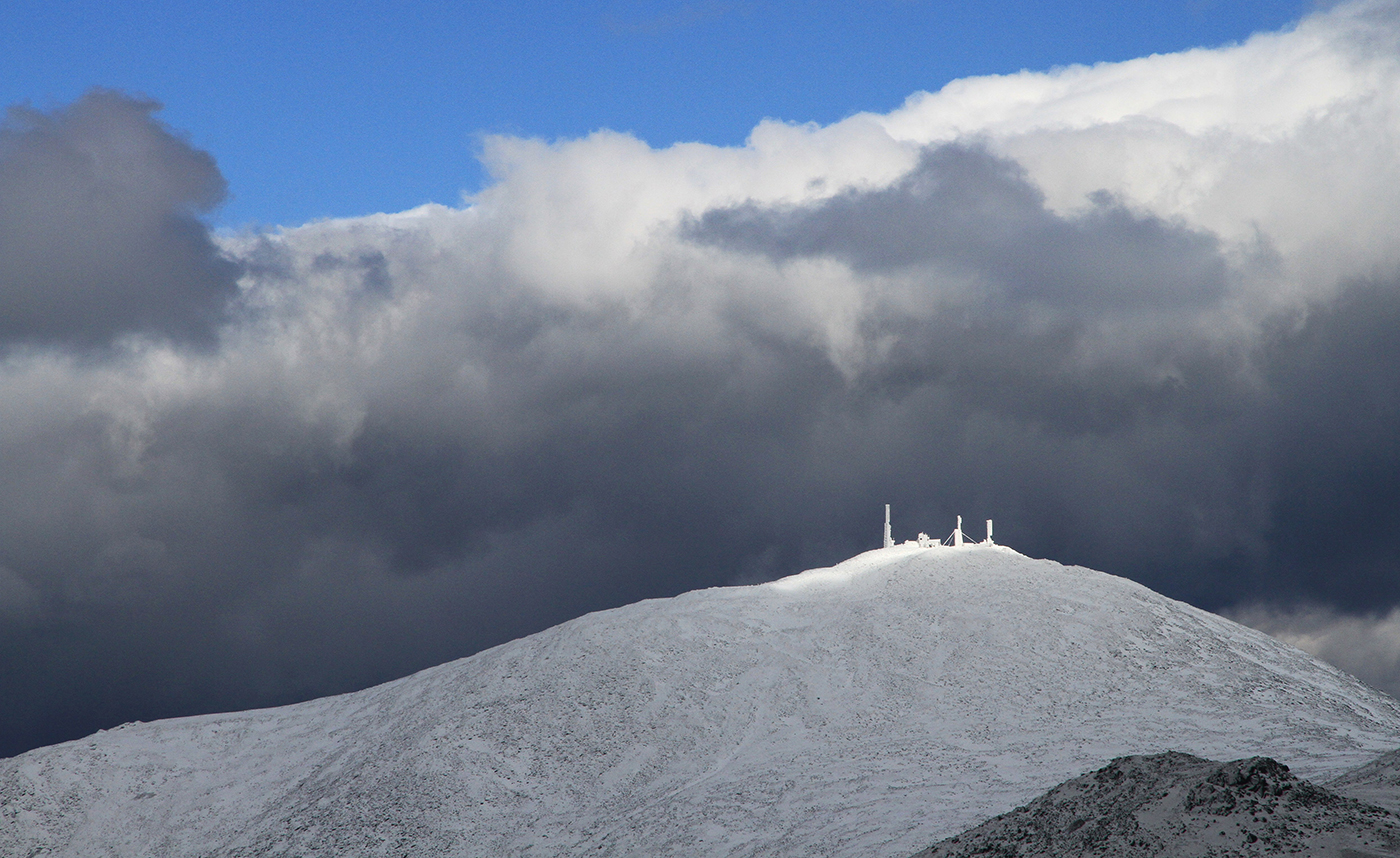
Washington is Warming
For decades, AMC researchers could not definitively say the climate was changing atop Mount Washington—until now. Temperature and snow data sets from the Northeast’s highest peak, and an adjacent mid-elevation site at Pinkham Notch, reveal this region is warming, even at the highest elevations. AMC researchers, including Staff Scientist Georgia Murray and former Director of Research Ken Kimball, in partnership with the Mount Washington Observatory, examined the period of 1930 through 2018 and found warming temperatures, changing winter conditions, and extended growing seasons. Differences in the two sites were also identified with weaker winter temperature changes for the summit compared to Pinkham— meaning winter average temperatures year to year were not always consistent with a warming trend over time on top—yet other winter metrics, like number of frost days, clearly indicate a shift away from colder conditions at both locations. The study also found that snow depth is declining by 11.5 cm, or 4.5 inches, every 10 years at Pinkham Notch, demonstrating significant changes are already unfolding in Northeast mountains.
Murray, G.L.D., A.M. Colgan, S.J. Nelson, E. Kelsey, K.D. Kimball, 2021. “Climate trends on the highest peak of the Northeast: Mount Washington, N.H.,” Northeastern Naturalist 28(SI11): 64-82.

Threatened Mountain Habitats
Predicting the way climate change is affecting the northeastern region’s restricted alpine ecosystems is a complex endeavor. Compared to elsewhere in the world, alpine ecosystems in the Northeast are low for their latitude, existing at elevations below the limits of tree growth. After the glacier melted in our region around 14,000 years ago, the regional climate inhibited soil and forest development on some of the higher peaks, allowing the region’s small, localized alpine areas to survive into the present. The question today is whether they will persist as the climate warms in the coming decades. Kimball, Murray, and AMC’s former Alpine Ecologist Doug Weihrauch expand on earlier hypotheses that wind and moisture, not temperature, explain the continued existence of the region’s alpine ecosystems. The region’s higher elevations can experience their own weather with clouds forming as moisture moves upslope. Layering of the atmosphere can subject higher elevations to frequent wind, cloud, and rime-icing events that reduces tree stature to totally eliminate them by breaking their limbs. The periodic exposure to an atmospheric layer called the “free troposphere” and the frequent cloud cover also moderate climate warming, potentially keeping alpine areas cooler.
Kimball, K.D., D.M. Weihrauch, G.L.D. Murray, 2021. “Understanding Northeastern U.S. Alpine Mountains: Context, Causal Agents of Treeline, and Meteorology to Approximate their Response to Climate Change.” Northeastern Naturalist 28(SI11):83–107.
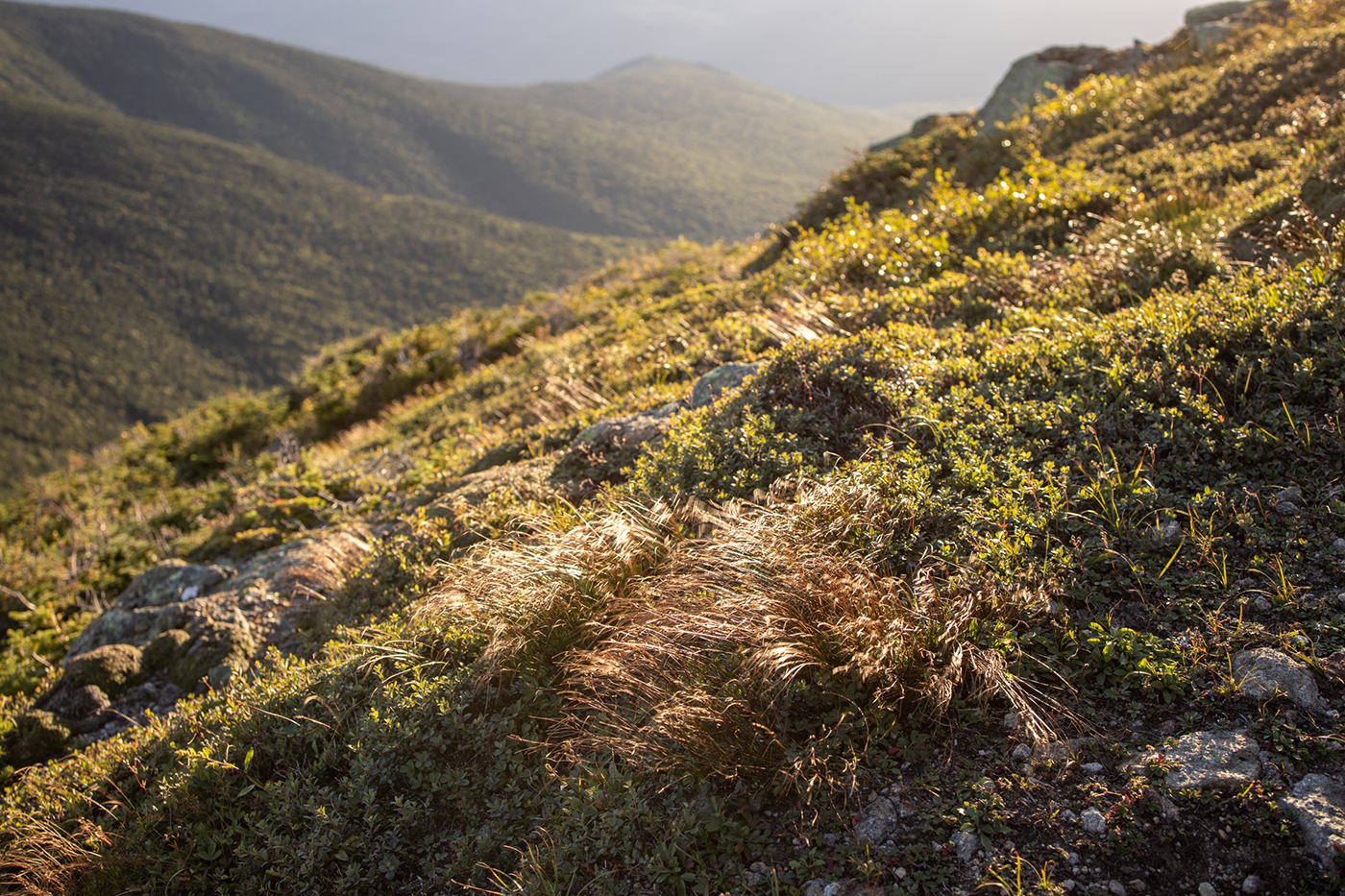
Conserving Northeastern Mountains
What are the conditions and values of northeastern mountains, and how might that information help prioritize future land conservation? AMC Assistant Director of Research Dr. David Publicover and co-authors Kimball and AMC Assistant Staff Scientist Cathy Poppenwimer evaluated 765 distinct areas above 2,700 feet in elevation from the Catskill range in New York to Baxter State Park in Maine. The areas were assessed for both their condition (development and harvesting) and 14 ecological values—such as the presence of rare plants or natural communities, average carbon stocking, and whether they lie within a large, roadless area. A quantitative scoring system allowed the highest-value areas to be identified (with New York’s Adirondack High Peaks, Maine’s Katahdin, and the Presidential Range of New Hampshire at the top), as well as the highest-value unconserved areas. The paper, which includes a companion interactive map, discusses the impact of climate change on high-elevation areas and their potential to serve as refugia for spruce-fir-dependent species in a future warmer climate.
Publicover, D.A., K.D. Kimball, C.J. Poppenwimer, 2021. “Northeastern High Elevation Areas: Ecological Values and Conservation Priorities.” Northeastern Naturalist 28(SI11): 129–155.
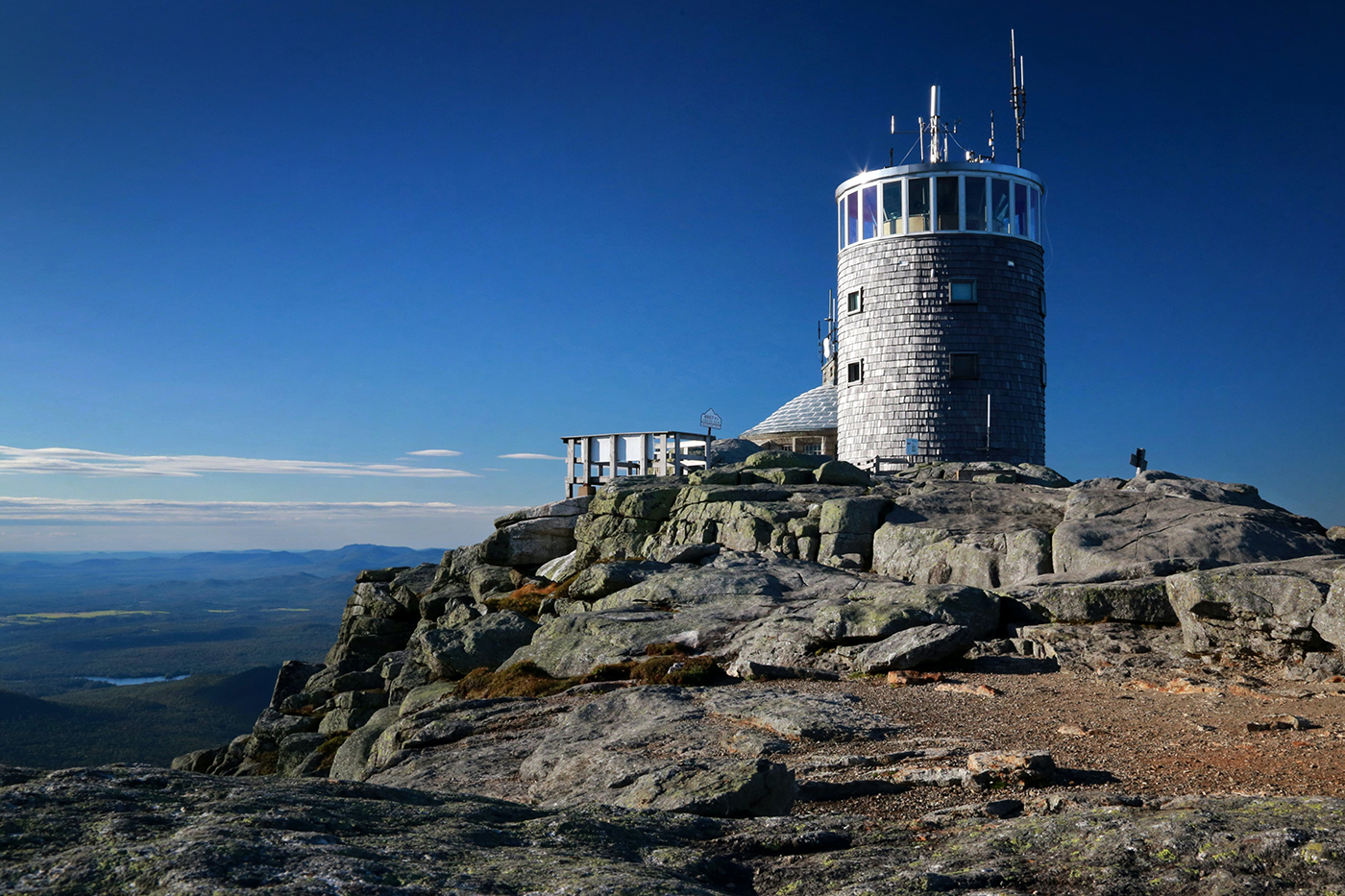
Sentinels for Climate Research
Sentinel research sites are of critical importance to the study of global environmental changes over time. Whiteface Mountain in the Adirondack High Peaks Region is one of these sites that has had a profound impact on studies of major human-caused changes to our environment. This paper focuses on the storied history of research on Whiteface: from acid rain and forest ecosystems to climate change. The co-authors—which include Jordon Tourville, an Edna Bailey Sussman Fellow at SUNY-ESF, who is cooperating with AMC on a climate change research project—also identify six key characteristics that serve to create a successful sentinel research site: accumulation of high-quality long-term data; features representative of a broad area; availability of appropriate infrastructure and staffing; sustained governmental and community support; active communication and outreach programs; and dedicated leadership. “We hope that an understanding of the history and success of Whiteface can serve as a blueprint for the development of other such research sites in an era of global change,” Tourville says.
Wason, J., J. Battles, M.B. Berdugo, P. Casson, J. Tourville, M. Dovciak, 2021. “Sentinel Research Sites in Global Change Research: Whiteface Mountain, New York.” Northeastern Naturalist 28(SI11): 47–63.
The post Climate Change in the Mountains: AMC-led Journal Issue Explores the Impacts appeared first on Appalachian Mountain Club.

